Nobody loves shoveling the sidewalk, scraping off the car, or navigating slippery roads. But the pros of snow arguably outweigh the bad: The pristine natural beauty of a snow-covered landscape, the hushed magic of a delicate flurry, the cozy promise of a snow day, pastimes like skiing, snowboarding, sledding, and, of course, holiday fun. Hoping for a white Christmas? Looking to avoid the fluffy-and-slushy stuff altogether? If you’re wondering which states get the most snow, plan accordingly with this list of the 20 snowiest U.S. states.
20. Ohio
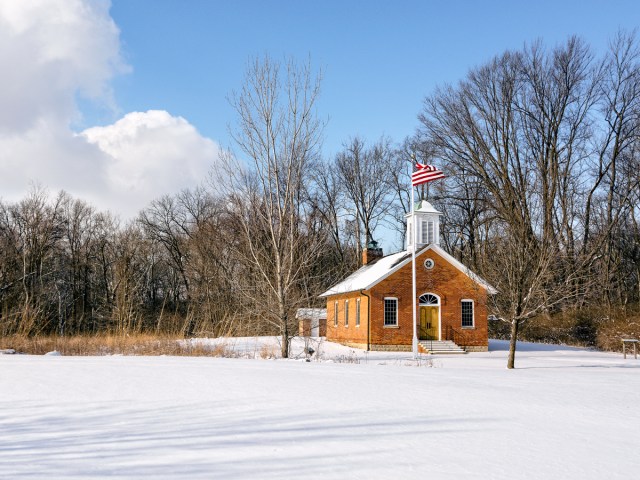
Average annual snowfall: 21 inches
Coming in at No. 20 on the list of snowiest states is Ohio, which averages 21 inches of snowfall annually. The Buckeye State borders Lake Erie, which produces what’s known as lake-effect snow, leading to considerable amounts of snowfall during the winter, particularly in the northeast portion of the state.
However, snowfall has decreased in many areas in Ohio since the 1970s — Cleveland has experienced a decrease of 7%, while Toledo has seen those annual numbers decline by 9%. It’s a far cry from the 1959-1960 winter season, when a record 161.5 inches of snow fell on the city of Chardon. Ohio saw the most amount of snow produced from a single storm in 1996, when a six-day event led to 69.5 inches falling in the northeastern parts of the state.
19. Utah

Average annual snowfall: 22.6 inches
Depending on where you’re located in Utah, annual snowfall can vary considerably. Southern cities like St. George, which borders Arizona, rarely get much snow. But then there are the state’s popular ski areas, which experience hundreds of inches annually. Take, for example, the Alta Ski Area, which received a staggering 903 inches of snowfall during the 2022-2023 ski season, setting an all-time statewide record. Many skiers claim that the ski conditions in Utah are the best in the country, and with all that fresh powder, it’s easy to see why.
18. Iowa
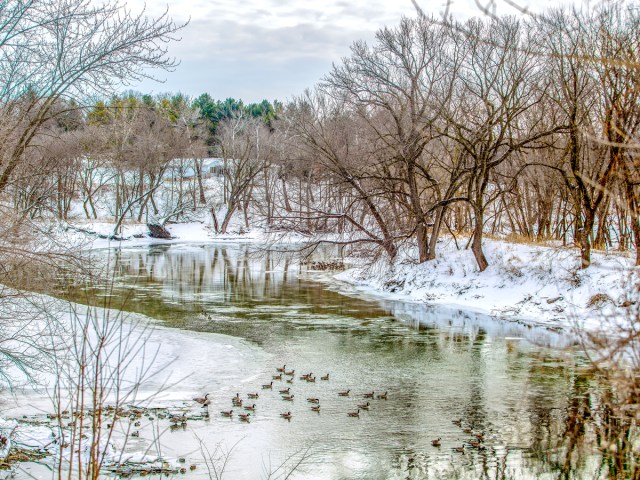
Average annual snowfall: 23.4 inches
Iowa’s climate wasn’t always known for producing much snowfall, but that began to change during the mid-19th century. The first recorded blizzard occurred in Iowa in December 1856 and dumped 18 inches of snow overnight. Nowadays, these seasonal blizzards are a regular occurrence in the Hawkeye State. But it’s hard to predict when the first snowfall of the season will actually occur, especially in the capital city of Des Moines. In both 1932 and 2009, Des Moines saw its first major snowfall on October 10. But back in 1939, no snow fell on Des Moines until December 26.
17. South Dakota
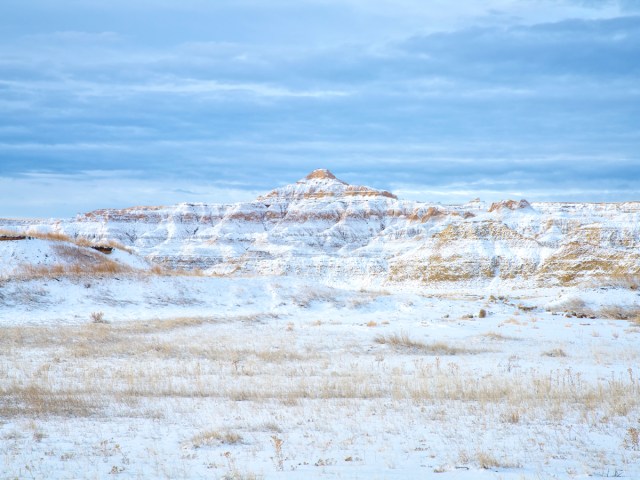
Average annual snowfall: 23.8 inches
Eastern South Dakota and western South Dakota are wildly different in terms of snowfall. In eastern portions of the state, where you’ll find cities including Sioux Falls, annual snowfall can reach an average of 30 inches. But out west — home to the Black Hills and Mount Rushmore — annual snowfall can hit a whopping 200 inches. Still, some storms blanket the whole state. In May 1905, a storm nicknamed the “Great Equalizer” dumped up to 4 inches of snow on various parts of the state, and in 1949, a multiday snowstorm produced snowdrifts as tall as 35 feet.
16. Idaho

Average annual snowfall: 24.5 inches
The 1948-1949 winter season was a particularly rough one for Idahoans. Those who were alive back then saw a new snowstorm hit the eastern part of the state every week from November 21, 1948, to February 19, 1949. The statewide record for annual snowfall, however, didn’t occur until 1985, when the city of Pocatello received a staggering 79.5 inches.
That amount is far more than snowfall in the capital city of Boise, for instance, whose record holds at only 46.5 inches of snow in 1964. Idaho may not be as popular of a ski destination as neighboring Utah or Montana, but there are still about 22,000 acres of skiable terrain spread out across the state’s 19 ski resorts.
15. North Dakota

Average annual snowfall: 25 inches
Ranking above its southern counterpart, North Dakota is America’s 15th-snowiest state on average. This should come as little surprise given that North Dakota borders Canada, which is known for its substantial snowfall and winter weather. The weather in this northernmost Plains state is known for being unpredictable; it’s not uncommon for there to be torrential snowfall one day and sunny blue skies the next.
Given North Dakota’s generally flat terrain, powerful winds often cause wind chills to drop below zero and send snow gusting through the air, leading to whiteout conditions that make driving impossible. Bismarck, the capital, experiences 46 inches of snow each year on average, more than the rest of the state. North Dakota also endured 27 inches of snowfall in just 24 hours on April 27, 1984.
14. West Virginia
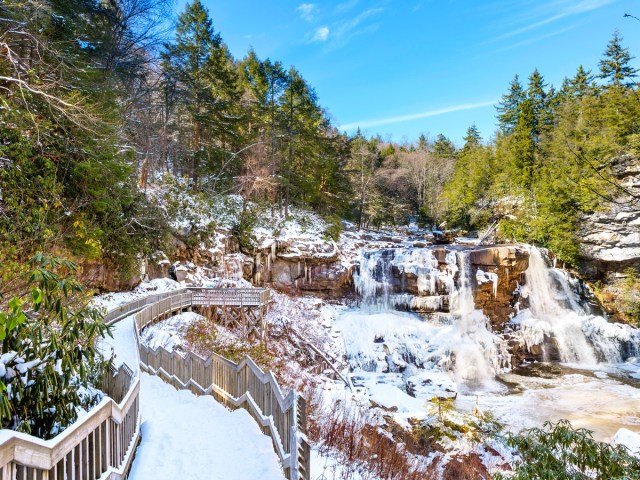
Average annual snowfall: 25.5 inches
Winter in West Virginia can be volatile — there was barely any snow during the 2022-2023 season, but a considerable amount fell the following year. In order to understand how powerful these winter storms can get in West Virginia, we need to look back to the 1950s.
From November 24 to 29, 1950, 57 inches of snow fell in Pickens, Randolph County, which is the largest recorded snowstorm in the state’s history. This same storm dumped tremendous amounts of snow in major metropolitan areas such as Charleston (25.7 inches) and Elkins (34.7 inches). The most snow that fell in a 24-hour period in West Virginia was the 35 inches that coated the ground in Mercer County on January 27 and 28, 1998.
13. Pennsylvania
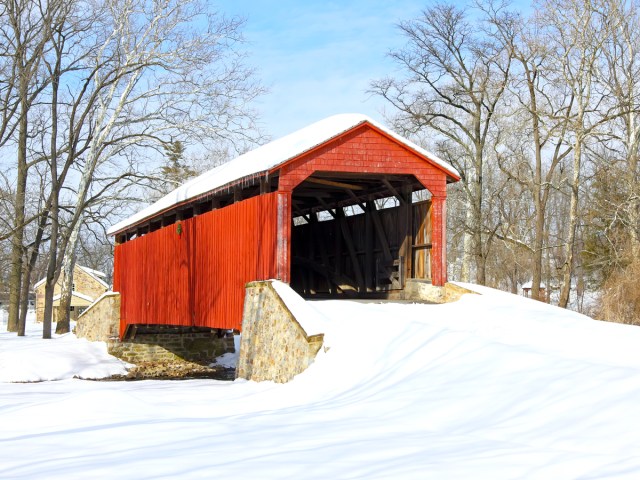
Average annual snowfall: 29.0 inches
The Keystone State has a particularly impressive fleet of emergency vehicles ready to go at the sign of the first snowfall, with 2,199 plow trucks able to deploy over 800,000 tons of salt on average. If you lived in Pennsylvania, you’d understand just how necessary these resources are, as it’s the 13th-snowiest state in the U.S. On average, Pennsylvania receives nearly 30 inches of snowfall annually, due in part to the lake effect coming off Lake Erie and the many nor’easters that run up along the eastern part of the state. But all that snow means that Pennsylvania also offers accessible, family-friendly skiing at local resorts such as Jack Frost, Bear Creek, and Big Boulder.
12. Rhode Island

Average annual snowfall: 31 inches
While Rhode Island has experienced a mild decline in annual snowfall since 2003, before that, numbers actually rose since 1905. The snowiest month on record in Rhode Island was February 2015, when 31.6 inches fell on the capital city of Providence, breaking a 53-year-old snowfall record. The Blizzard of ’78 also evokes powerful memories among locals, as that storm dumped 1 to 2 inches across the state every single hour. If you’re looking for a unique winter activity in Rhode Island, head over to the coast of Narragansett Bay, where it’s common to see migratory harbor seals from November until April.
11. Wisconsin

Average annual snowfall: 32.4 inches
Snowfall in Wisconsin varies considerably from north to south, with the southern region accumulating around 30 inches annually. In contrast, some extreme parts of the state’s northern region have reported upwards of 100 inches of snow per year. Referred to as “Up North” by Wisconsin residents, the northern half of the state is home to both the Gogebic Range and Lake Superior, both of which contribute to the large amounts of annual snowfall. As a result, winter sports such as skiing, snowmobiling, and ice fishing are integral to Wisconsin’s winter culture, as a way to make the most of the snowy region.
10. Colorado
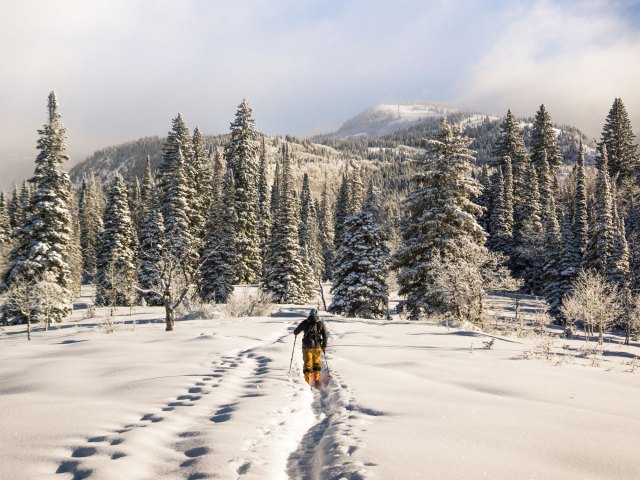
Average annual snowfall: 36.9 inches
Colorado is one of those rare places that is both especially snowy and sunny, which is why winter enthusiasts flock to the state. Colorado’s plentiful mountain ranges receive more than 120 inches of snow a year, while the state also boasts an average of 240 sunny days. With popular ski resorts such as Telluride, Aspen, and Vail to choose from, Colorado is a skier’s paradise, and most people who visit in the winter are in search of fresh powder. If you’re not a fan of the white stuff, however, the capital city of Denver often experiences less snowfall than other parts of the state, with an average of 56.5 inches of snow per year and nearly 300 days of sunshine.
9. Minnesota
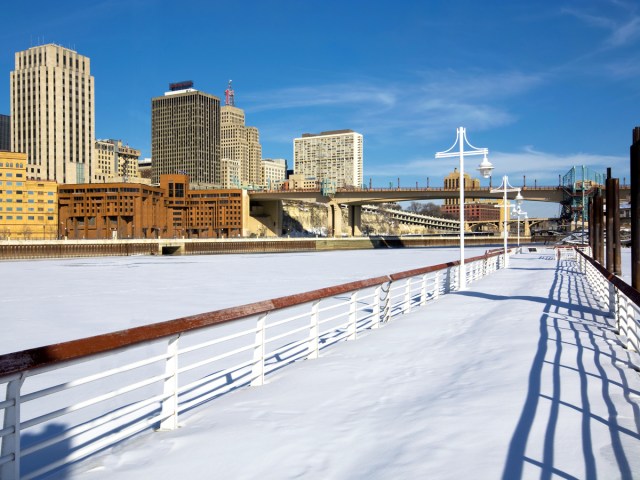
Average annual snowfall: 37.8 inches
Minnesota is well known for its bitter winter weather. The state saw record low temperatures of -60 degrees Fahrenheit on February 2, 1996. But it’s not just frigid cold that Minnesotans have to contend with — there’s also tons of snow. On January 7, 1994, the Finland region of the state endured a staggering 36 inches of snow in a 24-hour span — the most snow recorded in a single day in Minnesota history. Don’t be surprised to see Minnesota winters extend into the spring, even as the rest of the country starts to experience warmer weather. In Minnesota, it’s common for there to be snow into May; in 2013, the state saw a substantial 18 inches of snowfall during that month.
8. Connecticut
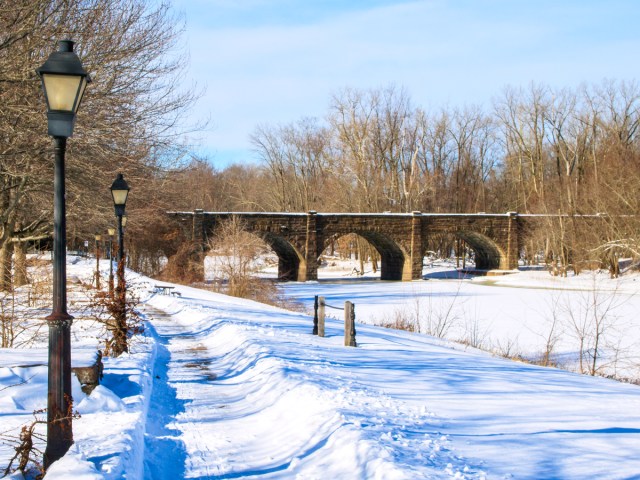
Average annual snowfall: 38.7 inches
From 1991 to 2020, the average snowfall throughout Connecticut hit 48.1 inches annually. However, that number has declined in recent years across the state. The capital city of Hartford — located in the central part of the state — offers an interesting glimpse into these trends. Hartford received only 3 inches of snow during the 2001-2002 winter season, but that number ballooned to a whopping 86.4 inches during the winter of 2010-2011. Last year, however, Hartford received only 24 inches of snowfall, continuing a downward trend over the last three years. Despite this negative trajectory, Connecticut is still the eighth-snowiest U.S. state.
7. Michigan

Average annual snowfall: 43.5 inches
Michigan’s highest snowfall occurs in the northern part of the state. As the Upper Peninsula has access to three different Great Lakes, it’s no surprise that is where the heaviest snowfall is recorded, due to lake-effect storms. According to the National Oceanic and Atmospheric Administration, parts of the U.P. receive over 180 inches of snow annually. As a result, it is not uncommon to use a snowmobile as a primary mode of transportation here during the winter.
6. Massachusetts
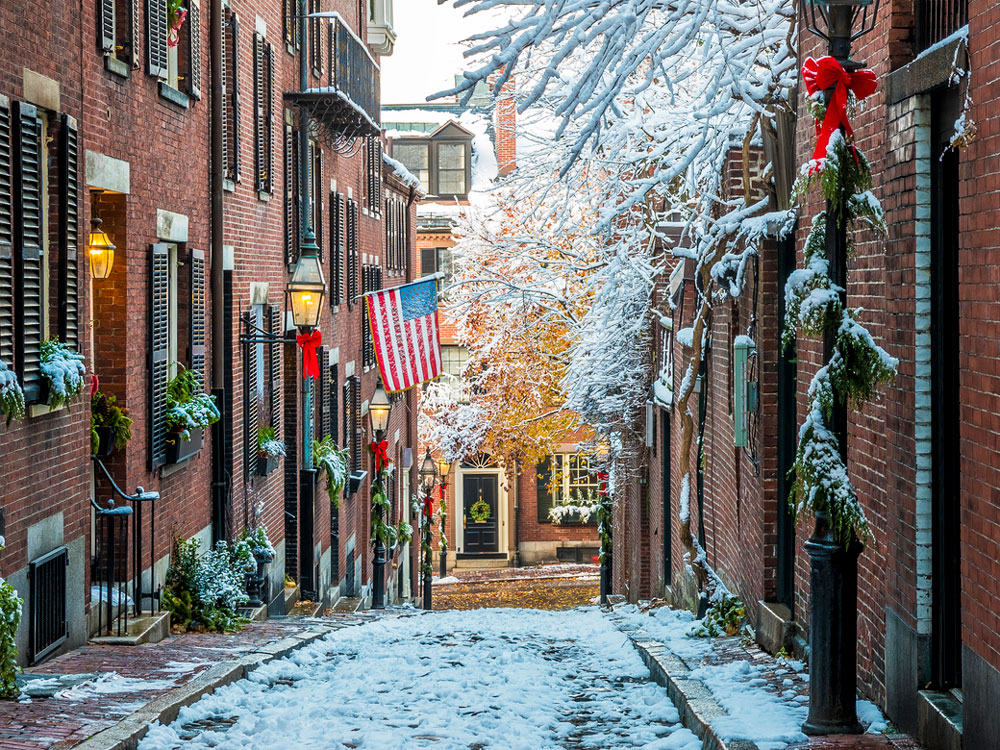
Average annual snowfall: 44.3 inches
For such a small state, Massachusetts often receives an inordinate amount of snowfall. The winter of 2014-2015 was record-setting, with a whopping 108 inches recorded over the season. In the city of Boston, which is known for its narrow cobblestone roadways, 6-foot-high walls of snow lined every street and sidewalk. Much of the snowfall was a result of nor’easters, which are storms with strong winds and heavy precipitation that form along the Atlantic seaboard.
5. New York

Average annual snowfall: 51.3 inches
Although New York City can be subject to nor’easters, like the infamous Blizzard of ‘96, most of the state’s annual snowfall occurs upstate. With lakeshore access to two Great Lakes (Erie and Ontario), upstate New York experiences heavy lake-effect snow. These storms occur when arctic air passes over lake water and is warmed and moistened, resulting in heavy snowfall. In November 2014, two consecutive lake-effect storms dropped 9 feet of snow on Buffalo, New York, over the course of just three days.
4. Maine
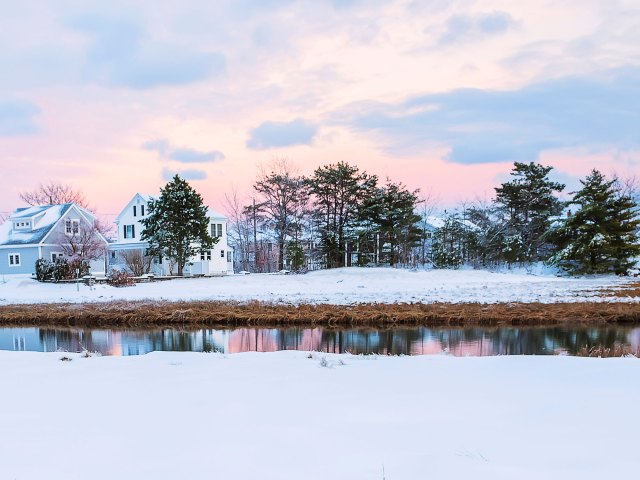
Average annual snowfall: 57.6 inches
Over the past decade, Maine’s precipitation events have gradually increased. Coastal Maine typically receives less snow than the interior parts of the state and is often subject to freezing rain and sleet in the winters. Similar to Massachusetts, however, the coast of Maine is subject to nor’easters, and these cold-weather storms can dump a foot or more of snow in 24 hours. The northernmost tip of the state often receives the most snow, reporting 125 inches annually.
3. Vermont
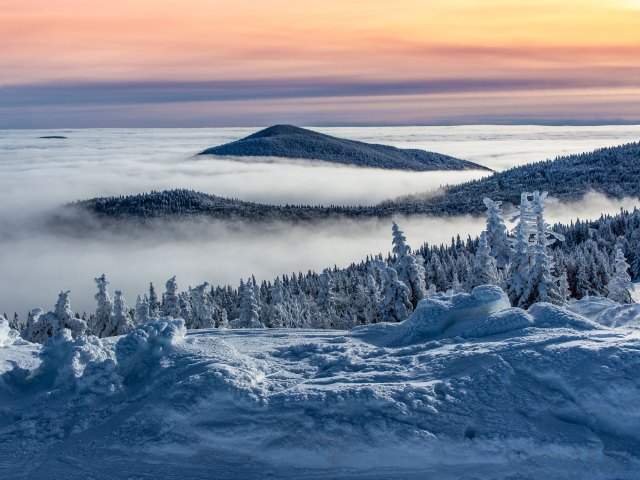
Average annual snowfall: 58.4 inches
Although Vermont is a popular destination in any season, the state, which is home to the Green Mountains, is a haven for winter sports enthusiasts who love to spend time in the snow. Average snowfall registers upwards of 120 inches in parts of the highlands during the winter months, which means there are plenty of opportunities to ski, snowshoe, and snowmobile throughout the state. Vermont often receives heavy snowstorms from the northwest, as well as lake-effect snow from Lake Champlain.
2. New Hampshire
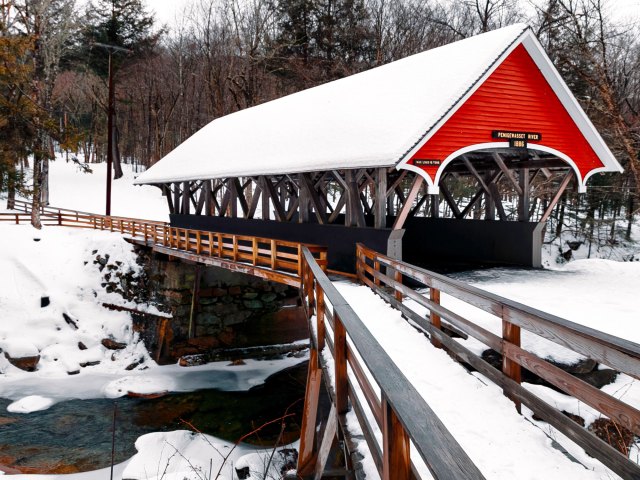
Average annual snowfall: 59.9 inches
New Hampshire is a state famous for its long, snowy winters. When combined with its access to mountains — including Mount Washington, the highest peak in the Northeast — it’s a popular place for skiing and other snow-based activities. The winter of 2014-2015 was a banner year for skiers, as Concord received 90 inches of snow, well more than average. And in 2007-2008, the state capital received a record 119 inches. Due to its heavy snowfall, skiers can ski Mount Washington throughout the spring and, sometimes, into the summer.
1. Alaska

Average annual snowfall: 72.8 inches
What is the snowiest state in the U.S.? It should probably come as no surprise that Alaska — with its extreme northern location — has the highest average annual snowfall, though different regions experience varying levels of snowfall. That’s because Alaska is a massive state with a highly variable climate, with coastal areas being more temperate, and inland regions being subject to cold, snowy winters.
Alaska is also no stranger to jaw-dropping snowstorms, like when 78 inches of snow fell in 24 hours in 1963. Perhaps this is one reason why residents have learned to enjoy the winter, favoring activities such as dog sledding and snowmobiling throughout the cold season.
About the Data
To compile this list, we referenced data from World Population Review. The 2025 Snowiest States report looked at the annual average snowfall at 672 weather stations in all 50 states to determine the states with the highest average annual snowfall. Read the full report from World Population Review here.
More from our network
Daily Passport is part of Inbox Studio, which publishes content that uplifts, informs, and inspires.
















